-

How to be comfortable with tough decisions as a leader: 5 key steps
Leadership is often perceived as a journey paved with tough decisions and challenging choices. As a leader, you're entrusted with the responsibility of steering your team or organization towards success. While it's undoubtedly rewarding, it can also be daunting when those difficult decisions come knocking at your door. How can you become comfortable with making tough calls and ensure they lead to positive outcomes? Today, we'll explore five key steps to help you embrace the discomfort of leadership decisions and emerge stronger, more confident, and ultimately, a more effective leader.Embrace Your Role as a Decision-MakerLeadership is synonymous with decision-making. Accepting this fundamental aspect of your role is the first step to being comfortable with tough choices. Understand that every decision, whether big or small, plays a part in shaping the future of your team or organization. Embracing your role as a decision-maker empowers you to take charge and navigate the complexities of leadership.Gather Relevant InformationEffective decision-making relies on the availability of accurate and relevant information. Before making a tough call, ensure you've gathered all the necessary data and insights. Consult with your team, subject matter experts, and trusted advisors to gain a well-rounded perspective. Informed decisions are more likely to yield positive results, reducing the discomfort associated with uncertainty.Evaluate Potential OutcomesEvery decision carries a set of potential outcomes. As a leader, it's essential to consider these consequences, both positive and negative, when making a choice. Evaluating the potential outcomes helps you anticipate challenges and prepare contingency plans. It also provides a sense of control, making tough decisions more manageable. Trust Your Instincts and ExpertiseYour journey to leadership has equipped you with experience and expertise. Trust in your abilities as a leader. While data and consultation are crucial, your instincts play a significant role in decision-making. Be confident in your judgment and let your expertise guide you through the discomfort of tough choices.Communicate EffectivelyOnce a tough decision is made, effective communication is key to ensuring your team understands the rationale behind it. Transparency and openness foster trust and demonstrate your commitment to making decisions that benefit the collective. It also allows your team to see the human side of leadership, understanding that discomfort is part of the process.Leadership is not for the faint of heart, and embracing the discomfort of tough decisions is an integral part of the journey. By following these five key steps, you can not only become comfortable with making difficult choices but also turn them into opportunities for growth and development. Remember that leadership is a continuous learning experience, and each tough decision you make brings you one step closer to becoming a more confident, effective, and resilient leader. So, embrace your role, gather information, evaluate outcomes, trust your instincts, and communicate effectively, and you'll find that navigating leadership challenges becomes a skill you can master with time and practice.
-

Embracing transparency for effective leadership
Transparency is a vital aspect of fostering a healthy and inclusive work environment. As a female manager, embracing transparency can be a powerful tool for building trust, enhancing collaboration, and promoting equality. In this blog post, we will explore the importance of transparency in the workplace, discuss its unique significance for female managers, and provide practical tips on how to cultivate transparency in your managerial role.Lead by ExampleTransparency starts with leadership. As a female manager, lead by example by being open, honest, and forthcoming with information. Share updates, decisions, and challenges with your team in a timely manner. When you prioritize transparency, your team will feel more comfortable doing the same.Encourage Open CommunicationCreate an environment that encourages open and honest communication. Foster a culture where team members feel safe to share their ideas, concerns, and feedback. Actively listen to their perspectives and ensure that their voices are heard and valued. By promoting open communication, you can uncover valuable insights and strengthen team dynamics.Share the "Why"When making decisions or implementing changes, provide your team with the rationale behind them. Share the underlying goals, objectives, and considerations. By understanding the "why" behind decisions, your team can better align their efforts and contribute more effectively. Provide Regular FeedbackTransparency goes beyond sharing information; it also includes giving and receiving feedback. Regularly provide constructive feedback to your team members, acknowledging their strengths and areas for improvement. Encourage them to share their feedback with you as well, fostering a culture of continuous improvement and growth.Address Challenges and ConflictTransparency requires addressing challenges and conflict directly and openly. When conflicts arise, facilitate open discussions, encourage dialogue, and work towards finding resolutions. By openly addressing and resolving conflicts, you can build trust and strengthen relationships within your team.Advocate for Equal OpportunitiesAs a female manager, champion transparency in promoting equal opportunities. Ensure that decisions related to promotions, assignments, and project opportunities are based on merit and fairness. Advocate for diversity and inclusion, ensuring that underrepresented voices are given equal consideration.Recognize and Celebrate AchievementsTransparency includes recognizing and celebrating the achievements of individuals and the team as a whole. Give credit where it is due and publicly acknowledge the contributions and successes of your team members. Celebrate milestones and achievements, fostering a positive and supportive work environment.Conclusion: Transparency is a powerful tool for female managers in creating an inclusive and empowering workplace. By leading with transparency, encouraging open communication, sharing the "why" behind decisions, providing regular feedback, addressing challenges, advocating for equal opportunities, and recognizing achievements, you can foster a culture of trust, collaboration, and growth. Embrace transparency as a female manager and empower your team to thrive in an environment of openness and accountability.
-

Effective Leadership as an Introvert
As an introverted woman, you may feel like leadership roles are not for you. You might think that being a successful leader requires being outgoing, charismatic, and always the center of attention. But the truth is, introverts make great leaders too. In fact, some of the most successful and admired leaders in history were introverts, including Rosa Parks, Mahatma Gandhi, and Abraham Lincoln.As an introverted leader, you have unique strengths that you can use to your advantage. Here are some tips for effective leadership as an introvert:Embrace your quiet strengthAs an introvert, you may not be the loudest voice in the room, but that doesn't mean your ideas are any less valuable. In fact, your ability to listen, reflect, and analyze can be a powerful asset in a leadership role. Embrace your quiet strength and use it to your advantage.Practice active listeningOne of the most important skills for any leader is the ability to listen actively. As an introvert, you may naturally be a good listener, but it's important to be intentional about it. Practice active listening by fully engaging in conversations, asking thoughtful questions, and summarizing what you've heard to ensure you've understood correctly. Cultivate your communication skillsWhile introverts may not be the most talkative people, effective communication is still critical for successful leadership. Make sure you're comfortable communicating your ideas and vision to your team, and be willing to speak up when necessary. Practice your public speaking skills, and don't be afraid to ask for feedback and guidance from colleagues.Use your strengths to build strong relationshipsAs an introvert, you may not be the life of the party, but that doesn't mean you can't build strong relationships with your team. Use your strengths of empathy, authenticity, and listening to connect with your colleagues on a deeper level. Schedule one-on-one meetings to get to know your team members better, and make sure to follow up on their concerns and ideas.Create space for solitude and reflectionFinally, don't forget to take care of yourself as an introverted leader. It's important to create space for solitude and reflection so that you can recharge and bring your best self to your leadership role. Make time for activities that bring you peace and calm, such as reading, hiking, or meditation.In conclusion, being an introverted woman doesn't mean you can't be an effective leader. Embrace your strengths, practice active listening, cultivate your communication skills, build strong relationships, and make time for solitude and reflection. With these tips, you can lead with confidence and make a positive impact on your team and your organization.
-

What kind of leader Am I?
Do you struggle to articulate your value as a leader? You're not alone. Job seekers often struggle to communicate what makes them stand out from the competition. This is especially challenging for executives in transition who face intense competition and limited opportunities. It's crucial to take the time to understand what makes you unique as a leader.One helpful exercise is to identify three to five stories from your past positions where you were successful. Write them down and clearly outline the challenge you faced, the action you took, and the result you achieved. This is commonly referred to as the CAR exercise. By understanding the value you bring to a prospective employer, you'll be able to network, brand yourself, interview, and assess your needs more effectively.Once you have a handle on what you bring to the table, whittle it down to a clear and concise statement that identifies your desired role and the pains you can solve for an employer. Remember, your 30-second commercial is too long. Be clear and succinct when communicating your value statement. Use the WAIT principle: Why Am I Talking?Another helpful exercise is to draw a timeline of your past jobs and note what you liked and disliked about each role. This will help you understand the types of roles you're willing to undertake and those you're not. As a leader, it's crucial to be clear on your unique leadership contributions and the types of organizations that respond to them.Don't take your best strengths for granted and overlook your successes. Take responsibility for re-messaging your core skills to connect with potential employers. By identifying your unique leadership qualities, you can better articulate your value proposition and stand out in a crowded job market.
-

Behind The Inspiring Leadership of SK-II's First Female CEO Lee Sue-Kyung
If you’ve heard of global Japanese luxury skincare brand SK-II, chances are, you’ve heard a thing or two about it’s CEO Lee Sue-Kyung.As a fearless trailblazer who is shattering the glass ceiling as the global CEO of the Procter & Gamble-owned company, Lee Sue Kyung’s rise to the top of the company is nothing short of remarkable, fueled by her unwavering commitment to promoting diversity and inclusion in the workplace, and her passion for empowering women to achieve their full potential. With her visionary leadership and business acumen, Lee Sue-Kyung has transformed SK-II into a global powerhouse, while also earning a reputation as a vocal advocate for gender equality and women's rights. Today, we will take a closer look at the inspiring leadership of Lee Sue-Kyung and how she is changing the face of the beauty industry.Lee Sue-Kyung joined SK-II in 2008, and over the years, she has held various positions, including global brand manager and brand director for Japan and Korea. She quickly demonstrated her ability to drive growth and innovation, and in 2016, she was appointed as the CEO of SK-II, becoming the first female CEO in the brand's history.As a female leader in a male-dominated industry, Lee Sue-Kyung is passionate about promoting diversity and inclusion in the workplace. She believes that a diverse team brings a range of perspectives and experiences, leading to better decision-making and innovation. To this end, she has implemented several initiatives at SK-II to support women and promote gender diversity. SK-II launched the "Change Destiny" campaign in 2016, which aimed to challenge societal norms and empower women to achieve their dreams.Under Lee's leadership, SK-II has also been committed to sustainability and reducing its environmental impact. The brand has launched several initiatives to reduce waste and promote recycling, including the "Future X Smart Store," which uses AI technology to reduce plastic waste and optimize store layouts.Apart from her work at SK-II, Lee Sue-Kyung is also a member of the board of directors at the Japan Cosmetic Industry Association and the Personal Care Products Council. Her dedication to promoting diversity and inclusion has earned her numerous accolades, including the Women's Leadership Award at the 2020 CEW Achiever Awards.As a leader, Sue-Kyung is known for her strong vision and her ability to inspire and motivate her team. She encourages her employees to take risks and innovate, and she leads by example, constantly pushing herself to learn and grow. In an interview with Channel News Asia, she stated that "my job is to create a culture where people are inspired to come to work every day, to be their best selves, to feel included, and to feel valued."Lee Sue-Kyung's commitment to promoting diversity and inclusion also extends to championing women's rights and promoting female leadership in the workplace. She believes that women should have equal opportunities to advance their careers and that their voices should be heard at all levels of the organization. Under her leadership, SK-II has implemented several initiatives to support women in the workplace, including mentorship programs and leadership development programs specifically designed for women. In addition, SK-II has partnered with organizations such as UN Women to promote gender equality and women's empowerment.In an interview with the BBC, Lee stated that "diversity and inclusion are fundamental to our business success, and this includes gender equality." She went on to say that "we are committed to creating a culture where all employees feel valued, respected, and have the opportunity to succeed."Lee Sue-Kyung's commitment to promoting diversity, inclusion, and women's rights in the workplace has earned her recognition and respect within the industry. In 2020, she was named one of the Most Powerful Women in Business by Forbes Asia, and she has been a vocal advocate for gender diversity in the beauty industry.Overall, Lee Sue-Kyung is an inspiring leader who has made significant contributions to the success of SK-II and has championed diversity, inclusion, and women's rights in the workplace. Her dedication to promoting these values serves as a model for other leaders in the industry and beyond.
-

6 Leadership Tips for Newly-Appointed Managers
Congratulations on your recent promotion to a managerial position! While this is an exciting time, it can also be a bit overwhelming. Managing a team is a big responsibility, and it can take some time to find your footing. To help you get started, here are six leadership tips for newly-appointed managers:Set Clear Expectations One of the most important things you can do as a manager is to set clear expectations for your team. Be specific about what you want them to accomplish and by when. This will help ensure everyone is on the same page and working towards the same goals.Be Available As a manager, your team will look to you for guidance and support. Make sure you are available to them when they need you. Whether it's answering a question, providing feedback, or simply being a sounding board, make sure your team knows you are there for them.Communicate Effectively Effective communication is essential for any successful team. Make sure you are communicating regularly and clearly with your team. This includes both providing feedback and listening to their ideas and concerns. Encourage open and honest communication, and make sure everyone has a chance to be heard.Lead by Example As a manager, you are a role model for your team. Lead by example and demonstrate the behavior you expect from your team. This includes things like showing up on time, being organized, and demonstrating a positive attitude.Build RelationshipsBuilding strong relationships with your team is key to their success. Take the time to get to know each team member individually and understand their strengths and weaknesses. This will help you assign tasks and projects more effectively and help your team feel valued.Continue to Learn As a newly-appointed manager, there is always more to learn. Take advantage of training opportunities, seek out mentorship, and read leadership books and articles. The more you learn, the more effective you will be as a leader.Being a manager can be a challenging but rewarding experience. By following these leadership tips, you'll be on your way to building a successful team and achieving your goals. Good luck!
-

Women in Tech Leadership: What its like
Despite the strides made towards gender equality, women still face significant challenges when it comes to leadership roles in the tech industry. From a lack of representation in executive positions to systemic barriers and biases, the path to the top can be a difficult one for women. In this blog, we'll explore the experiences of women in leadership roles in tech, highlighting the barriers they face and the strategies they use to overcome them.The Underrepresentation of Women in Executive PositionsAccording to a study by the National Center for Women & Information Technology, women hold only 25% of professional computing jobs in the U.S., and just 5% of leadership positions in the tech industry globally. This lack of representation can create a culture where women struggle to be heard, feel isolated, and face bias and discrimination.Overcoming Imposter SyndromeImposter syndrome is a common experience for many women in tech, with a sense of self-doubt and fear of being "found out" as a fraud. A study by KPMG found that 75% of women in tech have experienced imposter syndrome at some point in their careers. To overcome imposter syndrome, women can focus on building their confidence through skill-building, seeking out supportive mentors, and practicing self-care. Challenging the Status QuoTo make progress towards gender equality in tech, women in leadership roles must be willing to challenge the status quo. This may involve speaking up about inequities, advocating for policies that support diversity and inclusion, and building networks of like-minded women. According to a study by McKinsey, companies with diverse leadership teams are more likely to outperform their peers, demonstrating the value of diverse perspectives and voices.Building Strong NetworksNetworking is a key strategy for women in tech, particularly those in leadership roles. Building relationships with colleagues, mentors, and industry professionals can help women gain access to new opportunities, learn about the latest trends and technologies, and expand their influence. According to a study by LinkedIn, women who have strong networks are more likely to achieve their career goals than those who do not.Focusing on Skill-buildingDeveloping new skills and staying up-to-date with industry trends is essential for women in tech, particularly those in leadership roles. According to a study by Deloitte, 90% of women in tech believe that continuous learning and development is important for career growth. By investing in skill-building through courses, training programs, and professional development opportunities, women can stay ahead of the curve and position themselves for success.Breaking the barriers to women's leadership roles in tech is essential for creating a more diverse and equitable industry. By challenging biases, building strong networks, developing new skills, and speaking out about inequities, women can rise to the top and shatter the glass ceiling. Together, we can create a brighter future for women in tech.
-

10 Ways to Tailor Your Resume for a Leadership Position
Looking to take on a leadership role in your next job opportunity? Aside from narrowing your job search to specific leadership positions, it’s equally as important to ensure that your resume is tailored for these roles!You’ll need to showcase your relevant experience, skills, and accomplishments that highlight your ability to lead. Additionally, tailoring your resume for a leadership position allows you to use the right keywords and phrases that will help your resume stand out to potential employers and increase your chances of getting noticed and selected for an interview.Here are 10 ways you can tailor your resume for a leadership position:Highlight relevant leadership experienceMake sure to highlight any previous leadership roles you've had, including specific accomplishments and responsibilities.Use strong action verbsUse powerful action verbs like "managed," "led," "oversaw," and "coordinated" to show that you have a track record of taking charge and getting things done.Show resultsThe proof is in the pudding! Provide concrete examples of how your leadership skills have led to positive outcomes for your previous employers.Tailor your resume to the specific positionCustomize your resume to the specific leadership role you're applying for, highlighting the most relevant experience and skills. You can tweak it slightly for each application you are making. Emphasize your communication skillsLeadership positions often require strong communication skills, so make sure to highlight your ability to effectively communicate with team members and other stakeholders.Show your strategic thinkingInclude examples of how you have used strategic thinking to drive business results and achieve goals.Show your ability to manage teamsThis is another key skill leaders must possess. Include examples of how you have managed and motivated teams to achieve common goals.Show your ability to work under pressureHighlight how you have handled difficult situations and managed to deliver results despite pressure or tight deadlines.Show your ability to adapt to changeInclude examples of how you have navigated and adapted to changes in the workplace, whether it be new technology, company restructuring, or other challenges.Use keywordsInclude industry-specific keywords and phrases that will help your resume stand out to potential employers.All in all, there are many ways you can tweak your resume to reflect that you are the perfect candidate for a leadership role. Make sure that you include clear examples of your strong points and zone in on those leadership-related skills, and you’ll be noticed by employers in no time!
-

Creating an inclusive hiring process: Tips for attracting and retaining diverse talent
An inclusive hiring process is essential for attracting and retaining a diverse and talented workforce. By creating a process that is fair, equitable, and welcoming to all candidates, you can ensure that you are finding the best candidates for your organization, regardless of their background or identity. Here are a few tips for creating an inclusive hiring process:Use inclusive language in job descriptionsUse language that is welcoming and inclusive in your job descriptions, avoiding language that could be perceived as exclusive or biased.Consider diversity in your sourcing strategiesThink about where you are sourcing candidates and consider how to diversify your pool of applicants. This may involve partnering with organizations that promote diversity, attending job fairs that focus on diversity, or using platforms that are designed to connect with diverse candidates.Have a diverse interview panelConsider the diversity of your interview panel and strive to include individuals from a range of backgrounds and experiences. This can help to ensure that all candidates feel welcome and comfortable during the interview process.Provide equal opportunities for all candidatesMake sure that all candidates have the same opportunities to apply, interview, and succeed in the hiring process. This may involve providing accommodations for candidates with disabilities or offering virtual interviews for candidates who are unable to travel.Follow up with all candidatesMake sure to follow up with all candidates, regardless of whether they were ultimately hired or not. This can help to maintain good relationships and ensure that all candidates feel valued and respected.By following these tips, you can create an inclusive hiring process that attracts and retains diverse talent and helps to build a strong and inclusive workforce.
-

Empowering Women in the Workplace: How Businesses Can Support and Promote Gender Equality
Gender equality in the workplace is not just a matter of fairness – it also makes good business sense. Studies have shown that diverse and inclusive workplaces are more innovative, productive, and profitable. Yet, despite progress in recent years, women continue to face a number of barriers in the workplace, including the gender pay gap, a lack of representation in leadership roles, and discrimination.So, what can businesses do to support and promote gender equality in the workplace? Here are a few steps that organizations can take:Conduct pay audits and address pay disparities. Pay disparities between men and women are a persistent problem, and addressing this issue is crucial for promoting gender equality in the workplace. Conducting pay audits can help identify any discrepancies and allow organizations to take steps to correct them.Promote women to leadership positions. Women are underrepresented in leadership roles across many industries, and this lack of representation has negative impacts on both individuals and organizations. By promoting women to leadership positions, businesses can create a more diverse and inclusive leadership team and better reflect the demographics of their workforce.Provide support and resources for women. This can include things like mentorship programs, networking opportunities, and professional development resources specifically geared toward women. Providing support and resources can help women build the skills and connections they need to advance their careers.Foster a culture of inclusion and respect. This means training employees on diversity and inclusion, as well as taking steps to prevent and address instances of discrimination and harassment. A positive and inclusive workplace culture is crucial for attracting and retaining top talent. Implement family-friendly policies. This can include things like paid parental leave, on-site childcare, and lactation rooms. These types of policies can help support working mothers and make it easier for them to continue their careers.Offer flexible work arrangements. Many women face additional responsibilities outside of work, such as caring for children or elderly family members. Offering flexible work arrangements, like the option to work from home or have flexible scheduling, can make it easier for women to balance their work and personal lives.Encourage men to be allies and advocates for gender equality. Gender equality is not just a women's issue – it's everyone's responsibility. By encouraging men to be allies and advocates, businesses can create a culture of support and understanding that benefits everyone.By taking these steps, businesses can create a more inclusive and supportive environment for women, helping to level the playing field and promote gender equality in the workplace. It's important to remember that promoting gender equality is an ongoing process and requires ongoing effort and commitment. By staying engaged and proactive, businesses can continue to make progress towards a more equitable and inclusive workplace for all.
-

Is A Leadership Position Right For You?
Pursuing a leadership position can be a rewarding and fulfilling career choice, but it's not for everyone. Being a leader requires a unique set of skills and qualities, and it's important to carefully evaluate whether a leadership role is the right fit for you. In this article, we'll explore some of the key considerations to keep in mind when deciding if a leadership position is right for you. From communication and problem-solving skills to the ability to delegate and adapt to change, we'll delve into the characteristics that are essential for success in a leadership role. Whether you're just starting out in your career or you're looking to take the next step in your professional journey, understanding whether a leadership position is right for you is crucial to finding career satisfaction and success.Things you should consider:1. Are you a good communicator? Effective communication is key to success in any leadership role. You'll need to be able to clearly articulate your vision and expectations, and be able to listen to and understand the needs and concerns of your team.2. Are you a strong problem-solver? As a leader, you'll be responsible for finding solutions to a variety of challenges. It's important to have strong problem-solving skills and the ability to think critically and creatively.3. Are you able to delegate effectively? One of the key responsibilities of a leader is to delegate tasks and responsibilities to team members. It's important to be able to identify the strengths of your team and assign tasks accordingly, while still maintaining oversight and accountability.4. Do you have strong interpersonal skills? As a leader, you'll be working closely with a team of individuals, and it's important to have strong interpersonal skills in order to effectively manage and motivate them. This includes being able to build trust and foster a positive team dynamic.5. Are you comfortable with making decisions? As a leader, you'll be responsible for making a variety of decisions, sometimes with incomplete information. It's important to be comfortable with making decisions and being accountable for the outcomes.6. Are you able to adapt to change? The business world is constantly evolving, and as a leader, you'll need to be able to adapt to change and think on your feet. This includes being open to new ideas and approaches which can help you learn and grow both personally and professionally.Ultimately, whether a leadership position is right for you will depend on your individual skills and qualities, as well as your career goals and aspirations. If you're considering pursuing a leadership role, it's important to carefully evaluate whether it's the right fit for you. Consider your strengths and weaknesses, and be honest with yourself about whether you possess the skills and qualities that are essential for success in a leadership role. If you do, then a leadership position may be a great fit for you. On the other hand, if you don't feel ready for a leadership role, or if it doesn't align with your career goals and aspirations, it may be best to continue developing your skills and exploring other career options. Ultimately, the most important thing is to find a career path that is fulfilling and satisfying for you.
-

Cisco ASEAN’s Bee Kheng Tay leads the charge for women
Bee Kheng Tay, Cisco Systems’ president and leader of its Asean business, champions women in STEM and makes a strong case for flexibility in the workplace. Remember that hilarious viral video from 2017 when a political science professor’s children video-bombed him in his home office during a live segment on BBC? “BBC Dad” put forth a valiant effort to keep his composure while he awkwardly stuck out a hand to keep his boisterous kids away from the camera. Post-pandemic, many now dial into a video conference from home. Bee Kheng Tay, president of Cisco Systems and the company’s Asean business leader, observed while barely stifling a laugh: “Parents used to shush their kids and keep them and the furkids away from their WFH stations during a virtual meeting. Now, we have our kids say hello to everyone. Sometimes, colleagues sit with their babies while we talk. We have become more understanding and more empathetic when integrating work and personal lives.” THE FUTURE OF WORK Having been appointed president of the multinational technology giant last November, Tay is a vocal proponent of this flexible, inclusive approach to the workplace.Cisco, which topped the Singapore Best Workplaces in Technology list for 2021, even announced a “no return to the office” policy. “In the future, every Cisco employee will be a hybrid employee, and it will be entirely up to them whether they work from home, at a cafe, or in the office,” Tay tells The Peak via a Cisco Webex video conference from her home. According to this policy, employees are not required to come into the office regularly and may work from home or elsewhere. “Remote working has been in our DNA for many years. It is built on the trust that people will do their best, regardless of where they work from. I cannot look over their shoulders or breathe down their necks all the time,” says Tay. Although she admits to sometimes missing the camaraderie of interacting with colleagues in the office, she has also discovered that, while working from home during the pandemic, her productivity is “very high”. According to the tech veteran, who has more than two decades of experience across the Asia-Pacific and in Japan with multinational firms such as HP and IBM before joining Cisco in 2016, the key to implementing this is ensuring that technology supports this mode of work. “When you have a hybrid work environment, you have to lay the foundation for connectivity and communication well, and our technology fits perfectly into that. We have collaboration tools that can be better than face-to-face interactions, as well as security suites that allow employees to connect securely to systems and applications they need to access,” she adds. TECH FOR GOOD In a broader sense, the company recognises the need to close the digital divide. “We understand that not everyone is technologically savvy. Employees who work in different geographic locations, with different linguistic preferences, and in different work environments may have difficulties collaborating with others virtually,” she explains. Cisco’s technologies aim to level the playing field for all participants so potential obstacles such as language differences become less of a challenge. The Webex meeting platform, for example, offers noise cancellation and voice enhancement technology, as well as real-time transcriptions and translations to facilitate communication. A number of other services, such as DNA Spaces, a cloud-based location services platform already in use in Cisco’s Singapore office, are designed to make workplaces safer by monitoring occupancy and ensuring that social distancing and safety guidelines are being observed. Innovations and services like these can help companies accelerate their digital transformation, which is crucial now that the world is moving towards the post-pandemic era. “A lot of companies in Asean are now at an inflection point as to how they can go into a digital transformation much faster than they planned for. Timelines have compressed and if you do not act quickly, the survival of your business might be in jeopardy. Our goal is to help customers adopt technology faster and better,” she says. Tay points to artificial intelligence as a growth area in its suite of platforms, including networking, security, collaboration and data tools. By harnessing big data and analytics, productivity can be increased. “Enabling people to connect, communicate and collaborate is what we do. We want to be the bridge between hope and possibility through technology.” WOMEN IN STEM A self-professed dynamo who moves at a figurative speed of 100km/h, Tay is passionate about encouraging and empowering more women to pursue careers in STEM (science, technology, engineering and mathematics). “Women represent 50 per cent of the population. Women are very capable and can multitask. But we are under-represented. We should be better represented in this world,” she says. “Cisco values this diversity and people with a diverse set of world views. How can we be a company of the world without this?” Throughout her career, Tay has embraced the challenges of carving out a solid career in the tech sector. An accountant by training, she made the switch to the technology sector because she was “bored”. And this is where she found her intellectual match. “There is no such thing as a five-year plan. This is a dynamic industry that changes rapidly so you have to continually learn and improve.” At the same time, she does not shy away from describing the unique challenges faced by women in tech. “Working in this environment means long hours. As women, we have many roles to play as employees, employers, mothers, wives, and daughters, and we tend to want to be the best at everything we do. Having a demanding job and many responsibilities can be challenging. When you have young children, it becomes overwhelming,” she says. Tay discloses that at an early stage of her career, when her children, now aged 19 and 21, were toddlers, she considered quitting to spend more time with them. But her husband advised her against it. “I was quite angry with him then,” she says candidly. When he passed away 10 years ago, she realised that the years of hustle as a working mother were worth it. “I don’t know how I would have returned to my career if I had quit back then. But you will be amazed at how well you can manage things when you have no choice. As I advanced in my career, I had to be a mother and a father.” Tay’s approach has been to place lesser expectations on herself by focussing on one role at a time. “Perfection is impossible to achieve. When I am mothering, I try to be the best mother I can be without worrying about work,” she elaborates. If you are a woman today struggling with this choice, her advice is: “Believe in yourself and your support system. Know that whatever difficult challenges you are going through will pass.” STRETCHING HER MIND Tay’s other great passion is reading when she is not working. Her interest in particle physics, psychology and philosophy has led her to pick up non-fiction books during free time. As a counterbalance, she is also trying to read the top 100 books of all time, according to TheGreatestBooks.org. She has already completed about 30 books and is currently reading Marcel Proust’s In Search of Lost Time. The one that has had the greatest impact on her thus far has been Ralph Ellison’s Invisible Man, about social issues affecting African Americans in the early 20th century. A fitting choice for this powerhouse whose role involves making the world a more equal place for everybody. She says, “It allowed me to better understand how people who are being discriminated against feel. Empathy is just one part. As a reader, I felt as if I had taken the character’s place.” The original article was published here.Half the Sky's mission is to supply the tools that can give every woman the ability to build a successful career and be fully prepared for the future of work. So, that they can lead a healthy, prosperous and more balanced/blended lifestyle of their choosing. By building your confidence, you’re setting foundations to empower yourself and your career. The world is your oyster, and it starts with you. Enjoyed this article let us know your thoughts in the comments below:
-
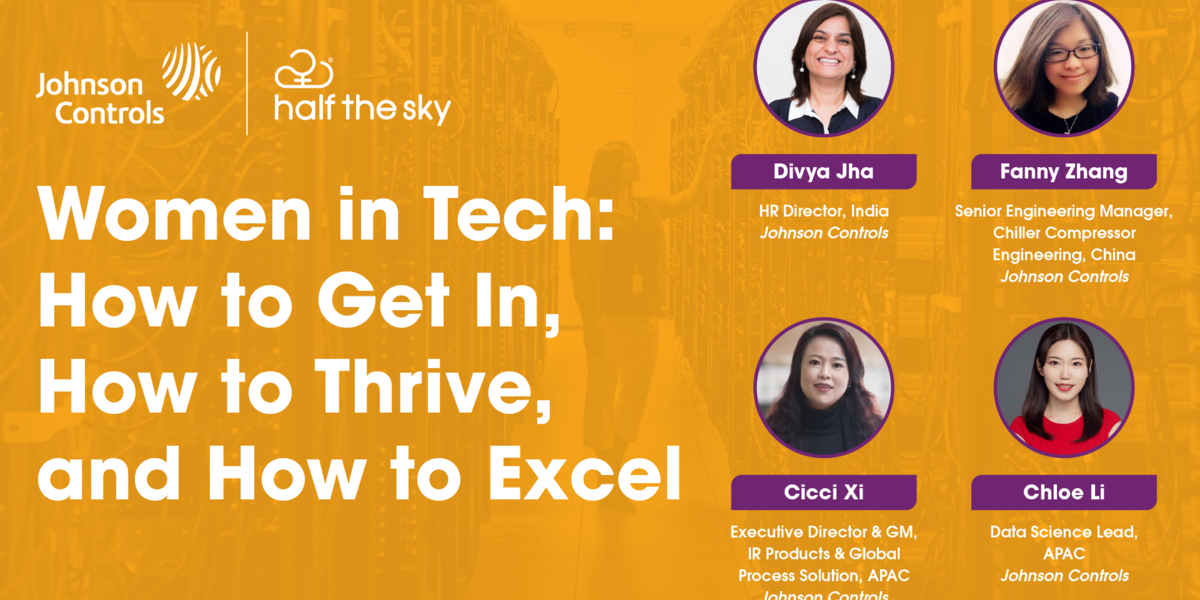.png)
Johnson Controls | HTS: Women in Tech: How to Get In, How to Thrive, and How to Excel
Half the sky is partnering with Johnson Controls on this fireside chat to discuss three important how-to’s for succeeding in a career in tech: “How to get In”: Discussing how to break into the industry. “How to Thrive”: Discussing being a female professional working in the industry and how to navigate this. “How to Excel”: Discussing positioning oneself for the future. Watch this video and learn from four female leaders from Johnson Controls who are not only making a mark in their field, also actively empowering women, to share their journey within the male-dominated profession:Cicci Xi, Regional Director, Global Industrial Refrigeration Products and Solutions APAC; China Fanny Zhang, Senior CMP Manager; China Chloe Li, IT Business Lead, Data Science APAC, Singapore Divya Jha, HR Director, India
-
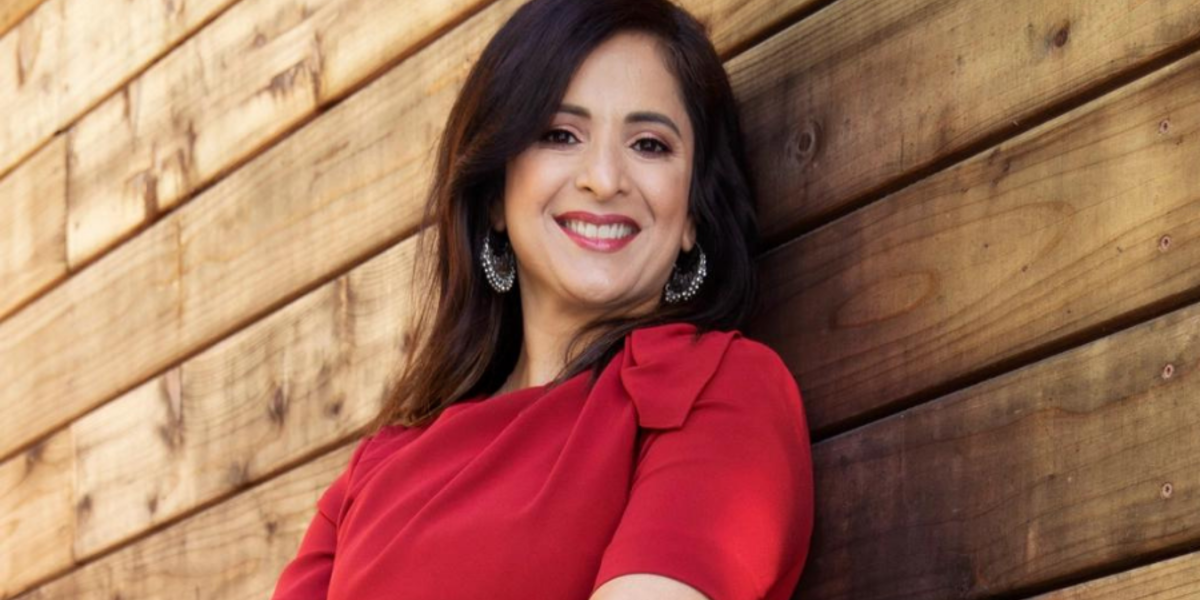
Business Insider: 100 people transforming business
Yamini Rangan started her career as an engineer before moving to sales and other more customer-centric roles at companies like Workday and Dropbox.Rangan said the sheer variety of her experiences had given her a strong foundation in how customers think and how to grow companies — a foundation that will serve her well in her new role as CEO of HubSpot, the prominent marketing-technology company.Rangan says her priority is guiding the company’s efforts to become a fully fledged customer-relationship-management platform, competing with the likes of Salesforce and Microsoft.Hubspot started in the marketing-automation software business but has expanded into other aspects of customer interactions. Rangan’s goal is to help the company become the No. 1 CRM tool for high-growth companies.“Our mission is very, very clear, which is to help millions of organizations grow better,” Rangan told Insider. “The focus has been to continue to broaden the product portfolio as well as continue to deepen all of the really great features for each of the editions.”There is a huge shift happening in buyer behavior and how customers want to interact with companies, Rangan said. Even business buyers want to purchase things the way they buy consumer goods. That gives HubSpot an opportunity, she said.“CRM needs to be very much customizable, it needs to be completely connected, and it needs to be very much customer-centric,” she said.In pursuit of its loftier ambitions, HubSpot this year also made the unconventional acquisition of The Hustle, a startup-focused media company, to create educational content for customers looking to grow and scale their companies.The vision is to give customers “the education as well as the inspiration” to “drive their front office,” Rangan said.The original article was published here.
-
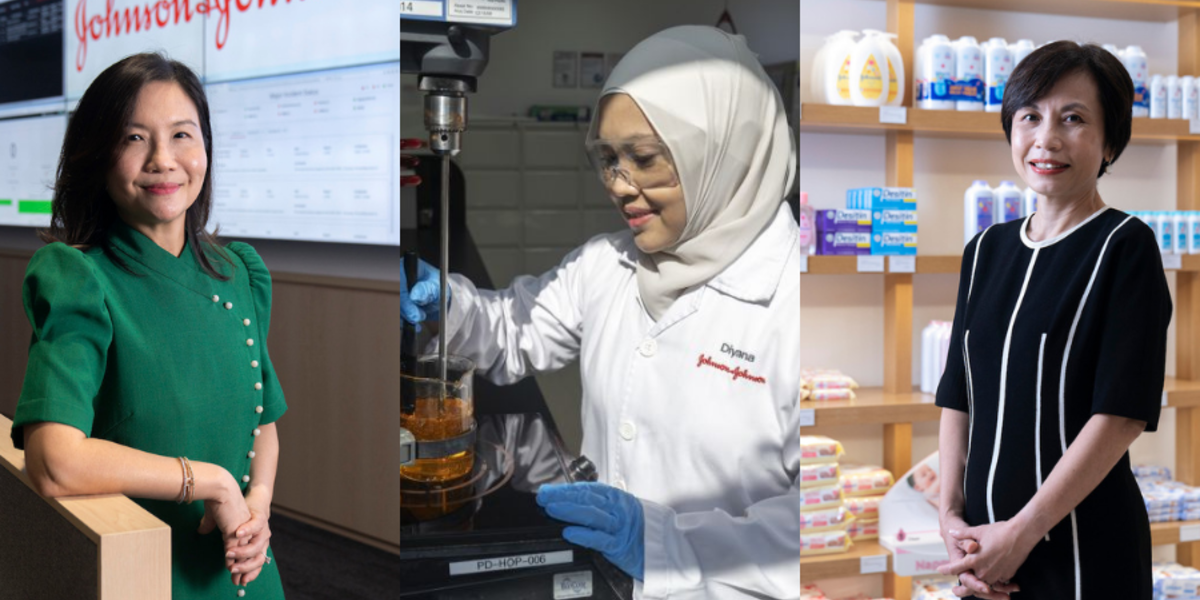.png)
S’poreans overcome challenges at MNC, grow into global leaders
MNC invests in developing skills of locals. The result: Turning S’poreans into global leadersMs Diyana, who created anti-ageing skincare products for J&J, is now working in the regulatory affairs division as an associate manager.They yearned for the opportunity to learn, to be challenged and to lead — on a global level.And realised their goals when they joined pharmaceutical and healthcare giant Johnson & Johnson (J&J).Ms Diyana Sudarsono wanted to learn and broaden her scope. “I knew that J&J could help me to become an expert because of its large portfolio of brands,” says the 35-year-old.Before joining J&J in 2008, she was the sole researcher in a small firm that specialised in wet wipes. “I was creating formulations for the wipes’ liquid and wanted to expand my skills.”At J&J, she was given the opportunity to learn from, and work with, global teams to develop products for J&J’s skincare brands, including Clean & Clear and Neutrogena.Soon, she was leading a team to produce formulas for a new anti-ageing skincare line for J&J’s Asia Pacific (Apac) market.Along with exposure, there was ample training, including a part-time six-month stint in 2018 at its Apac oral care franchise research and development team, from whom she learnt how to develop formulas for other products, including mouthwashes, expanding her portfolio of skills.Last year, she took a leap of faith and transferred to its regulatory affairs division as an associate manager.“I wanted to challenge myself (again) and work in a completely different space. I was afraid to make the move, but my bosses and mentors were very supportive of my decision,” she says.I wanted to challenge myself (again) and work in a completely different space. I was afraid to make the move, but my bosses and mentors were very supportive of my decision.MS DIYANA SUDARSONOShe is among Singaporeans at J&J who have been groomed for leadership positions.Another J&J mover and shaker is Ms Rowena Yeo, 53.The mother of three thrives on challenges. And at J&J, she says, there is seldom a dull moment.After the Covid-19 pandemic struck, Ms Yeo had to lead J&J’s transition to remote working for over 135,000 staff worldwide.“As J&J is a large global company, I’ve had the privilege to lead many teams to solve complex and diverse problems, enabling me to learn and grow as a leader.”This includes building its cloud capabilities and developing tools to speed up its data scientists’ medical and healthcare research.Since being appointed J&J’s first non-American chief technology officer, and its global vice-president for technology services in 2019, she has frequently been tested with never-before challenges.When the Covid-19 crisis hit early last year, she was confronted with her latest test. She had to lead J&J’s transition to remote working for over 135,000 staff worldwide.This included ramping up J&J’s global infrastructure and its teleconferencing capabilities, and supporting employees and facilities around the world.She then oversaw the development of J&J’s global cloud strategy to enable and accelerate data scientists’ ability to uncover insights and accelerate clinical trials and drug discovery. Besides, she scaled up digital engagements such as the use of video-enabled robots for employees and patients in Japan. Additionally, she rolled out intelligent chatbots in 17 languages to enhance user experience around the world.In Singapore, her team — two software engineers working with a visually impaired intern — added voice-activated functions to the chatbot. Her team also supported the initiative with the Singapore Optometry Association and Optometrists and Opticians Board to launch a contact lens home delivery service for people with prescriptions.One company, many opportunitiesAmong the other Singaporeans at J&J who have risen to a leadership role is Ms Ong Ai Hua, 54. In her 31 years with J&J, Ms Ong, who graduated from the National University of Singapore, has risen from a sales product specialist to become the first Singaporean to be appointed as the company group chair for J&J’s pharmaceuticals business for Apac in 2017, and now the Apac head of government affairs and policy. At J&J, Ms Ong has risen from a sales product specialist to being Apac head of government affairs and policy.Over the years, J&J has entrusted her with many responsibilities. These include developing a “one-company” model to combine its pharmaceuticals, consumer health and medical devices verticals under one management to increase efficiency, and create more attractive jobs with cross-functional and leadership roles. This model was implemented for its South-east Asia business in 2014.“With this model, we introduced new positions that cover two or more of the verticals, and more exciting regional and global positions based out of Singapore, improving our talent recruitment, retention and development,” she says.“I’ve been very blessed to have work that challenges and stimulates me, and pushes me to learn new things.”She adds that J&J wants employees to have long, successful careers. “Quite early on, the company asked me to move to China to lead the medical devices business, but I couldn’t go because of family reasons. J&J offered me the opportunity two more times, and I was finally able to go in 2006,” she says.“J&J understands that there are different seasons in life, and it believes that talent development is a journey.”MS ONG AI HUAWelcoming women to StemA major J&J initiative is to encourage more Singapore women to join or return to science, technology, engineering and mathematics (Stem) fields.Today, 58 per cent of Singaporean women who graduate with Stem diplomas and degrees go on to have related careers, according to a recent study by Nanyang Technological University. And more can be done. At the biennial Women in Engineering, Science & Technology symposium in Singapore in March, President Halimah Yacob said: “To move forward as a nation, particularly in the recovery following the Covid-19 pandemic, it is more important than ever for women to also be at the frontiers of knowledge, defining the future direction of engineering, science and technology.”Speaking about the company’s efforts, Ms Yeo, who serves as Apac sponsor on its Women in Science, Technology, Engineering, Mathematics, Manufacturing and Design programme’s global steering committee, says: “We have different programmes to support girls and women at different stages of life.”To help them progress in such careers, J&J has rolled out an array of programmes over the years.Before the Covid-19 crisis, the company welcomed students to laboratories and designed hands-on activities for them, such as introducing them to product ingredients and letting them use the ingredients to create their own cleansers.Since the pandemic started, J&J has organised nearly 200 online and hybrid events for almost 2,000 women and girls in Singapore, including talks for tertiary students.Offering more details on how the company supports women employees, Ms Yeo says: “At J&J, we have a programme to recruit and assist women who have taken a career break and want to return to the workplace.”Internally, J&J has a Women’s Leadership and Inclusion (WLI) employee resource group for their employees.The group recently introduced a new Parents’ Tool kit that outlines the firm’s benefits and policies for them, and guides them on a range of topics, including having enabling conversations with their supervisors and how best to plan their parental leave around work.“The tool kit also highlights the importance of fathers in their role to support working mothers to be at their best. In fact, we launched it on Father’s Day to underscore this point,” says Ms Diyana, who is a co-lead in the WLI group’s community pillar. She notes that J&J has many accomplished women leaders, some of whom have given her invaluable advice, including when she was contemplating her move to the regulatory affairs division.“They’ve inspired me to grow professionally, and I hope to pass on what I’ve learned and motivate future generations of women too.”About Johnson & Johnson135 years oldFounded in 1886, J&J was the first company to mass-produce antiseptic surgical supplies, including sutures, gauze, and bandages. It now employs over 135,000 people in 60 countries, including over 1,500 in Singapore.Regional headquartersIt set up its regional headquarters in Singapore in 1974. Its current premises at Science Park in Queenstown houses its Asia Pacific Design Lab, which focuses on innovations to solve healthcare challenges, and its Asia Pacific Leadership Lab, which serves as a think-tank and connects universities, government agencies and other partners.Giving back to societyThe company supports many causes in Singapore, including working with others to raise awareness of mental health and tackle the growing incidence of myopia. This includes collaborations with the non-profit Caregivers Alliance on mental health awareness programmes, and an ongoing partnership with the Singapore National Eye Centre and Singapore Eye Research Institute on myopia.The original article was published here.
-
%20(3).png)
6 Trailblazing Johnson & Johnson Scientists Past and Present
We're spotlighting three of the company's pioneering early female scientists—and their modern-day counterparts, who are not only innovating in the lab, but also paving the way for the next generation of powerhouse women.At the turn of the 20th century, most women didn't work outside of the home. So it was a bold move when Johnson & Johnson’s Chief Scientific Officer at the time, Fred Kilmer, hired the company's first female scientist, Edith von Kuster, in 1908.“Back then, there wasn't an awareness of the importance of diversity and inclusivity as we understand it today," says the company's Chief Historian, Margaret Gurowitz. “But Johnson & Johnson was different. The company had a strong commitment to hiring women from the beginning. If you could do a job at Johnson & Johnson, it was yours. If you were female and could do that job, great.”In fact, eight of the company’s first 14 employees were women. And by 1908, women led a quarter of Johnson & Johnson’s departments.We asked Gurowitz to tell us more about von Kuster and two other trailblazing female scientists at Johnson & Johnson—and also asked their modern-day equivalents what it’s like to be a scientist at the company today.1. The ChemistsHistoric Trailblazer: Edith von Kuster, the company's first female scientistWhen Edith von Kuster began her freshman year at the University of Minnesota in 1902, less than 3% of women attended college—and even fewer pursued a career in science. Von Kuster was drawn to chemistry, and ultimately became an instructor in general chemistry at the university in 1907.[Edith Von Kuster (image courtesy of her family); Johnson & Johnson lab (image courtesy of Johnson & Johnson Archives)] Meet the First Female Scientist Johnson & Johnson Ever HiredIn 1908, Johnson & Johnson hired her as a staff scientist, requiring von Kuster to travel by railroad halfway across the country from Minnesota to company headquarters in New Brunswick, New Jersey—quite an adventurous move for that era.“Fred Kilmer reached out to her and recruited her to Johnson & Johnson,” Gurowitz says. “We also know Mr. Kilmer was an early advocate for women pursuing the profession of pharmacy science.”Von Kuster worked in a small department of scientists who conducted research, published a journal called Red Cross Notes, and oversaw the testing of raw materials and finished products. She also joined the Laurel Club, an organization founded in 1907 by female employees to foster professional development and community service.“Edith was truly a pioneer at a time when there were very few opportunities for women in science,” Gurowitz adds.Being able to handle a lot of things at the same time is something I learned while juggling my work and personal life, including raising two kids, over the course of the last 15 years. It makes me proud to say that being a female scientist is less and less an exception.Trailblazer of Today: Ingrid Vereyken, Chemistry Manufacturing and Controls Lead, Compound Development TeamThere are a multitude of puzzle pieces—product development, production and manufacturing, preparing documents to submit to regulatory bodies for review—that have to come together to create new vaccines. Ingrid Vereyken is the lead who oversees multiple teams handling many of those moving parts.“My team at the Janssen Pharmaceutical Companies of Johnson & Johnson is responsible for developing and manufacturing the vaccines that go into vials, first for clinical trials, and later for commercial use," she says. "We've worked on everything from a potential Zika vaccine to a potential universal flu vaccine."She chalks up her ability to wear so many hats to being a working mom—in addition to her naturally results-oriented personality.11 Ways Johnson & Johnson Has Empowered Women Worldwide for Over 130 Years“Being able to handle a lot of things at the same time is something I learned while juggling my work and personal life, including raising two kids, over the course of the last 15 years,” she explains. "It makes me proud to say that being a female scientist is less and less an exception."And just as a good work-life balance has helped Vereyken thrive in her job, she advises other young women pursuing a career in science to shoot for the same.“I always tell other women to feel good about the decisions they make when it comes to their work and private lives,” she says. “If you feel you are making the right decisions, you’ll be better able to withstand the pressure both at work and at home. If you start doubting yourself too much, it will make things harder.”2. The Product ResearchersHistoric Trailblazer: Mary McGuire, the first woman to earn the Johnson Medal for consumer products research and developmentIn the early 1950s, Mary McGuire was in college studying to become a doctor, when family needs prompted her to leave school and start working as a research technician in the Personal Products division of Johnson & Johnson, which was focused on women's health.Within her first few years on the job, McGuire created patents and had a team of lab technicians reporting to her. In 1973, she became the first woman in company history to earn the prestigious internal award, the Johnson Medal, for the commercial success of her contributions to the creation of Stayfree®, the first belt-less sanitary pad that revolutionized female personal hygiene around the world.10 Ways Johnson & Johnson Has Helped Support Healthy Births and Moms Around the WorldMcGuire transferred from R&D to marketing in the early 1970s, then moved on to work on even more game-changing innovations in the company’s baby products business in the 1980s, including evaluating whether Johnson & Johnson should re-enter the disposable diaper business, which it had pioneered in 1904. After 37 years at Johnson & Johnson, she retired as Vice President of Marketing.Throughout her career, McGuire remained committed to helping other women at the company succeed, serving as a mentor and as a key member of then CEO General Robert Wood Johnson’s Women’s Committee, a group dedicated to integrating women more fully into the workplace and incorporating their point of view in business growth and development.“McGuire was a trailblazer in so many ways," Gurowitz says. "Her career path from scientist to VP helped pave the way for other promising female employees, as did her role in overseeing the development of those who reported to her, several of whom became leaders at Johnson & Johnson.”Never stop believing that you can achieve anything you set your mind to. Science is not easy, and there will be failures along the way—but don’t forget to learn from them.Trailblazer of Today: Simarna Kaur, Ph.D., Research Manager, Fellow, and Platform Leader, Translational Science, Johnson & Johnson Consumer HealthIn her role at Johnson & Johnson Consumer Health, Simarna Kaur, Ph.D., leads the team that works on the Ageless Platform, which involves research into the way that skin ages; Biodelivery, which focuses on delivering active ingredients effectively; and Skin-Tech, which encompasses the company's digital tools for skin health. In a nutshell, Kaur is tasked with bringing “new science, technologies and innovation to the company's consumer skin health product pipeline,” she says.For example, she has worked on multiple technologies featured in company products, including the signature soothing CottonTouch™ ingredient used in the Johnson's® CottonTouch™ baby bath line, as well as the Blackberry Complex—which nourishes skin and helps reduce visible signs of aging—found in Aveeno's Absolutely Ageless line.More Than Skin Deep: Meet a Johnson & Johnson Employee Who's Committed to Creating More Inclusive Skincare Products for Women of ColorFocusing her research on the body’s largest organ wasn’t always part of her career plan. In high school and college, Kaur wanted to pursue medicine and become a physician. But after doing an undergraduate research project on cell biology, she realized that she had a passion for science—and decided to pursue a Ph.D., instead.The fact that she never thought of a Ph.D. as off limits reflects her belief that, as she explains, “every scientist, regardless of their gender, brings unique strengths, insights, vision and problem-solving capabilities, based on their experiences.”According to a report from the McKinsey Global Institute, careers in science, technology, engineering and mathematics (STEM) are expected to see a spike in the next decade. But a gender gap—fueled by implicit stereotypes—persist. Kaur, however, is undaunted.“Motivated scientists should be recognized and celebrated,” she says. “Following in the footsteps of women in STEM who paved the way for me to become a female scientist, I hope to lead by example, showing that dedication, hard work and passion do get recognized.”Her advice to young women interested in becoming a research scientist? “Never stop believing that you can achieve anything you set your mind to,” she says. “Science is not easy, and there will be failures along the way—but don’t forget to learn from them.”3. The Lab SupervisorsHistoric Trailblazer: Jeanne Cholet Sauer, a bacteriologist who supervised a product testing labWhen Jeanne Cholet Sauer became the supervisor of the Technical Services Laboratory at Johnson & Johnson in 1944, World War II was still raging, and women were stepping in to help fill a lot of jobs that had previously been performed by men across many industries.But at Johnson & Johnson, female employees weren't just fill-ins for men on the front lines—many were full-time scientists like Cholet Sauer, who was responsible for research, distillation experiments and other duties in the areas of ingredient and raw materials testing, and quality and safety evaluations, says Gurowitz.“Cholet Sauer was in charge of an incredibly important lab. She was a bacteriologist, so it’s likely her lab engaged in the bacteriological evaluation of products and formulations," Gurowitz adds. "The fact that she wasn’t the only woman in the department at that time—and that she was a supervisor—shows Johnson & Johnson’s long-term commitment to women in sciences,” says Gurowitz.There are so many great female leaders at this company who inspire me. As a project lead, I hope to inspire others as well. I love being the glue that holds my team together, to help us work efficiently and effectively as we push to create something remarkable.Trailblazer of Today: Marit de Groot, Ph.D., Project Lead, Clinical Immunology, JanssenIn order to understand a vaccine candidate's efficacy, a team of scientists is charged with looking at the immune response that an investigational vaccine provokes by testing for antibodies and other immune markers in blood samples taken from all of the participants in clinical trials.As the Project Lead in the Department of Clinical Immunology, Marit de Groot is in charge of the team of scientists doing that type of immune response assessment for potential Janssen vaccines.De Groot oversees all activities in the lab, and has worked on multiple Janssen vaccines, including the one for Ebola.“My job involves aligning teams and providing clear communication on planning, proposals and decisions,” de Groot says. “For example, I often ask things like, ‘Do my colleagues in the labs have everything they need? What documentation is required to ship samples from a specific country to a specific lab? And most importantly, does everyone know what is expected and feel included and appreciated?' "6 Latest Facts About Johnson & Johnson's Ebola VaccineIt’s a role de Groot finds thrilling, and one her prior work as project lead on the company's Ebola vaccine program prepared her for in many respects. “Working on emergency healthcare programs—where the eyes of the world are on us—really motivates me,” she says.So does the fact that she is surrounded by impressive women scientists.“There are so many great female leaders at this company who inspire me,” de Groot says. “As a project lead, I hope to inspire others as well. I love being the glue that holds my team together, to help us work efficiently and effectively as we push to create something remarkable.”As for finding one's passion, de Groot emphasizes the importance of looking at one's personal life for clues. "Look at your hobbies and notice who you are in a setting outside of work. Ask yourself what your strengths are, and see how they could apply at work. How do you harmonize with people? Bring this all to the table."The original article was published here.
-

HTS Masterclass: Sara Cheng, Former Managing Director, Greater China at Twitter
Catch the replay of our fireside chat with Sara Cheng, global multi-lingual C-level executive hailing from Taiwan, and Sabrina Ho, CEO-Founder of Half the sky, Asia’s leading career platform for women.
-
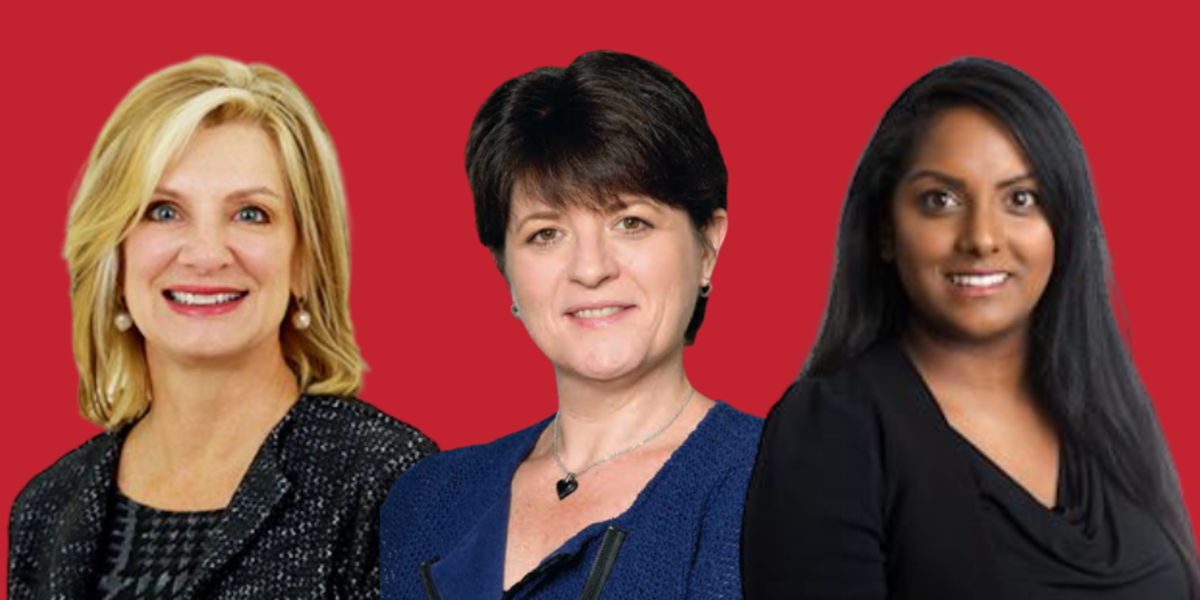.png)
Three Aon Colleagues Recognized As HERoes Women Role Models By INvolve
Jennifer Bell, Julie Page and Sabrina Pyneeandy celebrated for championing women in business and driving gender diversity in the workplaceA leading global professional services firm providing a broad range of risk, retirement and health solutions, is proud to announce that three colleagues were named to the HERoes Women Role Model Lists for 2021.Jennifer Bell, CEO, North America, and Julie Page, CEO, United Kingdom (UK), were both named to the HERoes 100 Women Executives List. This marks the first time an Aon leader has appeared on the list. Bell is co-chair of Aon's Global Inclusive Leadership Council (GILC), a group of 20 colleagues who champion inclusion and diversity (I&D) efforts across the firm. In this role, she regularly reports to the Inclusion & Diversity Sub-Committee of the Aon plc Board. In addition to advocating for representation at the leadership level, Bell has been an active mentor to dozens of colleagues and clients, many who are women."As the beneficiary of allies who helped further my career, I've been passionate and committed to equity—especially in my efforts to diversify talent with hiring and promoting," Bell said. "As a result of the incredible work being done by Aon's Global Inclusive Leadership Council, I'm proud of the impact we've made, and I am committed to driving action and impact for equity and inclusion across the firm."Page is a member of the GILC and Aon's UK Inclusive Leadership Council, ensuring alignment with the GILC to accelerate regional action. Throughout her career, she has worked to support gender diversity and women's inclusion both at Aon and in the broader insurance industry. Page currently serves as the President of the Chartered Insurance Institute and is a committee member for Inclusion@Lloyds. She was also former chair for the Dive In Festival committee, the festival for diversity and inclusion in insurance."I am a strong believer in the importance of a diverse workforce, but I know there is more work to be done," said Page. "I'm committed to championing all women and challenging myself and my team to increase our cultural competence and have difficult conversations to effect real change across our firm and the industry."Sabrina Pyneeandy, Project Manager in the UK, was named to the HERoes 100 Women Future Leaders list. She is co-chair of both the Gender Inclusion Network and Aon's UK Gender IQ Business Resource Group. Pyneeandy has played a pivotal role in Aon UK's mission to strive for gender parity by running events for International Women's Day, International Men's Day and Non-Binary Day. As well as developing key I&D goals and initiatives aligned to the business line she supports, Pyneeandy has been working with Aon's People organization on women's issues, particularly women's safety."Creating a culture were all Aon colleagues feel empowered to be their authentic selves is only possible when we all work together," said Lisa Stevens, Aon's Chief People Officer. "I am so proud and thankful for Jennifer, Julie and Sabrina's efforts to drive greater gender diversity both at Aon and across our industry." The firm is committed to furthering its I&D priorities to continue to build a resilient workforce and provide opportunities for colleagues through meaningful actions. To support this work, the GILC provides advice, recommendations and accountability for Aon's inclusion and diversity strategy and related actions, focused on five main areas:Recruiting: Driving inclusive and equitable hiring practicesEducation: Improving cultural competence and expanding awarenessRepresentation: Ensuring the workforce is reflective of the communities in which colleagues live and workPromotion: Increasing development opportunities for all colleaguesEnvironmental, Social and Governance: Ensuring alignment of policies, brand and purpose for environmental, social and governance issuesThe annual HERoes lists showcase leaders who are championing women in business and driving change for gender diversity in the workplace. The HERoes 100 Women Executives List spotlights senior women leading by example and driving change to increase gender diversity in the workplace, while the HERoes 100 Future Leaders List highlights inspirational women who are not yet senior leaders in an organization but are making a significant contribution to gender diversity at work. To learn more about the lists, visit this page. About AonAon plc (NYSE: AON) is a leading global professional services firm providing a broad range of risk, retirement and health solutions. Our 50,000 colleagues in 120 countries empower results for clients by using proprietary data and analytics to deliver insights that reduce volatility and improve performance.The original article was published here.
-

Experian Celebrates International Women’s Week Around the Globe
A year ago, as we celebrated International Women’s Day at Experian, none of us could have predicted what the year ahead had in store for us. It has been a year that has repeatedly tested us across so many facets of our lives. It has been a year that has reinforced the importance of our resilient and inclusive culture. And, it has been a year, that despite the unsettled environment, we at Experian have made progress.This year, as we kick-off our celebrations, we want to take a moment to acknowledge the passion, commitment and perseverance of our inspiring women and their allies who have contributed to that progress. Experian is celebrating International Women’s Day with employee-led activities around the world spearheaded by our Women in Experian employee resource group.We are also embracing this year’s theme of #ChooseToChallenge and started at the top of our house with our Chief Executive Officer, Brian Cassin, hosting a discussion between the inspiring women of Experian’s Board of Directors. The discussion focused on how to drive positive change and future growth. This event, and the participation of our board members, was reflective of Experian’s overall commitment to diversity. Each of our female board members shared what they will #ChooseToChallenge this year.Ruba BornoI #ChooseToChallenge the idea that opportunities are limited“Every opportunity is a gift. I choose to challenge the idea that those gifts are finite. Every time I climb a ladder, I want to keep that ladder behind me so someone else can climb it and we can rise together.”Alison BrittainI #ChooseToChallenge us all to become better allies“International Women’s Day is a great opportunity to reflect on the things that we can do, both individually and collectively, to champion change, support our colleagues and make a positive difference. Every day we need to strive to create a culture that supports inclusivity, so that everyone can unlock their potential and perform at their best, regardless of their background, gender, ethnicity or how they identify. We can become better allies by challenging the barriers to diversity and celebrating difference.”Caroline DonahueI #ChoosetoChallenge gender inequity “As a woman in tech, I was fortunate to have several amazing mentors, most of whom were men and my direct supervisors. They supported me and helped me thrive as a single parent with a global travel schedule. One of my motivations in joining the Experian board was recognizing that Experian has an amazing culture and believes in and supports women and their careers. Experian is committed to diversity and inclusion and knows that a diverse workforce creates better outcomes for employees and customers. I know we can achieve 50% amazing women at all levels at Experian, just as we have created great diversity on the board, including my fellow female board members. I am thrilled to be a part of this company and this journey.” Deirdre MahlanI #ChooseToChallenge obstacles to being heard“International Women’s Day is an opportunity to reflect on and celebrate the many roles that women play in contributing to families, culture, work and government. This year’s theme, #ChooseToChallenge resonates strongly with me. As a leader and a woman, I aim to live honestly and courageously and through my actions inspire others to live according to their own truth. We all have a role to play in ensuring we can each contribute and use our voice authentically. The many talents, leadership qualities and authentic voices of women at Experian in powering solutions will continue to be key to the success of Experian.”Our goals for International Women’s Week 2021 are to celebrate women’s achievements, raise awareness against bias and act against inequality. This week is an opportunity to reflect and contribute to our continuous journey for diversity, inclusion and belonging, and most of all, Choose to Challenge, because from challenge comes change.The original article was published here.
-
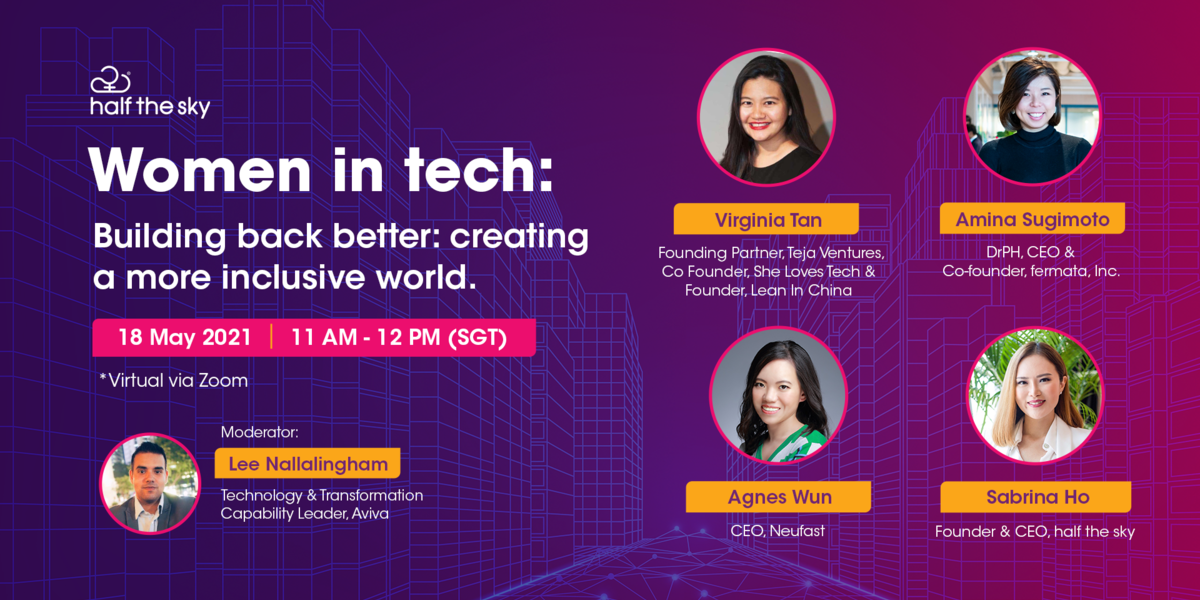
Women in Tech Panel 2021 Building Back Better: Creating A More Inclusive World
The Covid-19 pandemic has wreaked havoc on our world exacerbating existing inequalities across a range of areas including health, education and livelihoods. As the world slowly recovers and we rebuild, finding new perspectives and insights are essential to build a world that is more just and inclusive for all.During this webinar we will discuss with leaders and role models who are pioneers within their respective industries from AI, HealthTech, Venture Capital to Diversity & Inclusion. In this event, we aim to bring you new perspectives to inspire and hopefully lay a path to building back better.
Search by
Search by topic
